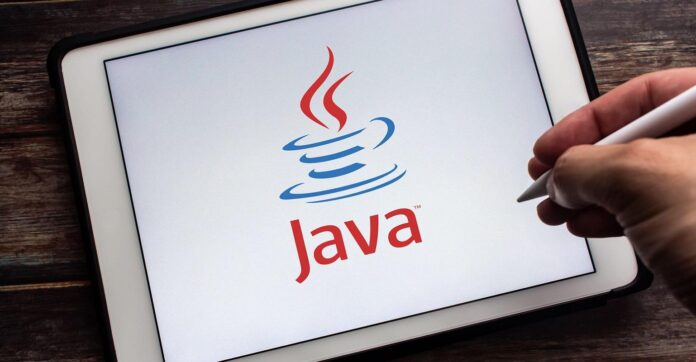In the dynamic realm of Java programming, developing strong and durable software applications requires a solid understanding of exception management. Exception handling enables programmers to foresee and skillfully handle unanticipated faults and extraordinary conditions that may arise while the program is running.
Your Java programming abilities can reach new heights by comprehending and putting into practice efficient exception-handling approaches, which range from fundamental syntax to sophisticated methodologies. We’ll delve into the subtleties of exception handling in Java through this extensive guide, which covers everything from fundamental ideas to industry best practices and practical implementations.
Understanding Exceptions in Java
In Java, an exception is an event that disrupts the normal flow of program execution. Exceptions can arise due to various reasons, including programming errors, hardware failures, and unexpected input. Java classifies exceptions into two main categories: checked exceptions and unchecked exceptions.
- Checked Exceptions: Checked exceptions are exceptions that must be either caught or declared by the method using the throws clause. Examples include IOException, FileNotFoundException, and SQLException.
- Unchecked Exceptions: Unchecked exceptions, also known as runtime exceptions, do not need to be explicitly caught or declared. They are typically programming errors that occur at runtime, such as NullPointerException, ArrayIndexOutOfBoundsException, and ArithmeticException.
1. The Try-Catch Block: Handling Exceptions Gracefully
The try-catch block is a fundamental construct in Java for handling exceptions. It allows developers to enclose code that may throw exceptions within a try block and provide exception-handling logic in subsequent catch blocks.
java
try {
// Code that may throw an exception
// Example: File I/O operations, database queries
} catch (ExceptionType1 e1) {
// Exception handling logic for ExceptionType1
} catch (ExceptionType2 e2) {
// Exception handling logic for ExceptionType2
} finally {
// Optional block for cleanup code
}
The Finally Block: Resource Cleanup and Finalization
The finally block is used to execute cleanup code that should be run regardless of whether an exception occurs or not. Common use cases for the finally block include closing files, releasing database connections, and releasing other system resources.
2. Exception Propagation: Delegating Exception Handling
In Java, exceptions can be propagated up the call stack until they are caught or reach the top-level exception handler. This allows for centralized exception handling at higher levels of the program, providing a unified approach to managing exceptional conditions.
3. Exception Handling Best Practices
- To ensure effective exception handling in Java applications, developers should adhere to the following best practices:
- Use Specific Exception Types: Catch exceptions at the appropriate level of granularity by using specific exception types rather than catching generic Exception objects.
- Log Exception Details: Always log exception details, including the exception type, stack trace, and context information, to aid in troubleshooting and debugging.
- Handle Exceptions Appropriately: Handle exceptions gracefully by providing meaningful error messages to users, logging exceptions for analysis, and taking appropriate corrective actions when possible.
- Follow Try-With-Resources: When working with resources that implement the AutoCloseable interface (e.g., streams, database connections), use the try-with-resources statement to automatically close resources after use, ensuring proper cleanup and resource management.
4. Custom Exception Classes: Enhancing Error Handling
Java allows developers to define custom exception classes to represent specific error conditions or application-specific exceptions. Custom exceptions extend the standard Java exception classes and can provide additional context and semantics to exception handling.
class CustomException extends Exception {
public CustomException(String message) {
super(message);
}
}
Developers can distinguish between various problem kinds and give users and system administrators more insightful error messages and information by crafting unique exception classes.
5. Techniques for Managing Exceptions: Defensive Programming
To handle exceptions effectively, proactive measures must be taken to stop, identify, and address mistakes before they happen. Input validation, error checking, and defensive coding techniques are examples of defensive programming approaches that reduce the possibility of exceptions and increase the resilience of applications.
Defensive null-checking, user input validation, and precondition testing before performing crucial actions are a few techniques that can be used to find possible fault circumstances and stop exceptions from spreading.
6. Patterns for Handling Exceptions: Responsibility Chain
Java applications can use the Chain of Responsibility pattern, a behavioral design pattern, for handling exceptions. This pattern handles exceptions by sequentially invoking numerous handlers, each of which is in charge of handling a particular class of exception or set of error conditions.
abstract class ExceptionHandler {
private ExceptionHandler successor;
public void setSuccessor(ExceptionHandler successor) {
this.successor = successor;
}
public void handleException(Exception exception) {
if (successor != null) {
successor.handleException(exception);
}
}
abstract void handle(Exception exception);
}
By implementing the Chain of Responsibility pattern, developers can create flexible and extensible exception-handling pipelines that dynamically adapt to changing error conditions and requirements.
7. Asynchronous Exception Handling: Completable Future
With the introduction of CompletableFuture in Java 8, developers have more options for handling exceptions in asynchronous and concurrent programming scenarios. CompletableFuture provides methods for handling exceptions, composing asynchronous tasks, and managing execution dependencies fluently and expressively.
CompletableFuture.supplyAsync(() -> {
// Asynchronous computation
return result;
}).exceptionally(ex -> {
// Exception handling logic
return defaultValue;
});
BCompletableFuture, when combined with exception handling features such as Exceptional handlers and try-catch blocks, allows developers to create asynchronous systems that are fault-tolerant and robust, allowing them to gracefully accept mistakes and failures.
8. Testing Mocking and Unit Testing for Exception Handling
- Software testing and quality assurance need testing of exception handling code. To verify how exception handling logic behaves in various error scenarios and conditions, unit tests can be written.
- Mocking frameworks: Mockito, PowerMock, and others can be used to mimic exceptions, manage the actions of external dependencies, and confirm that exceptions are handled correctly in unit tests.
- Developers can find and fix possible vulnerabilities, corner cases, and error scenarios early in the development lifecycle by including exception handling tests in the overall testing approach.
Conclusion
Applications of Exception Handling in the Real World
In many different fields and sectors of the software development industry, exception management is an essential component. Effective exception handling is essential to maintaining the dependability, robustness, and availability of software systems in real-world applications. Here are some real-world instances of exception handling in action:
- Web Application Development: Errors that arise during request processing, database access, and external service integration are handled by exception handling in web application development. Maintaining a seamless user experience and making troubleshooting easier are two benefits of using custom error pages and exception logging systems.
- Enterprise Application Integration: To handle communication breakdowns, data validation problems, and service interruptions across dispersed systems in enterprise application integration (EAI) scenarios, exception handling is crucial. In complex integration environments, robust exception handling systems facilitate transaction management, message redelivery, and system recovery.
- Financial Systems: Exception handling is essential for managing transaction mistakes, network outages, and data integrity concerns in financial systems and trading platforms. In high-stakes financial contexts, real-time alerting, monitoring, and failover methods guarantee continuous operation and regulatory compliance.
- IoT and Embedded Systems: Hardware failures, sensor malfunctions, and communication mistakes are handled by exception handling in IoT (Internet of Things) and embedded systems. In resource-constrained contexts, graceful degradation, fault tolerance, and remote diagnostics all contribute to system uptime and reliability.
Conclusion
A fundamental idea in Java programming, exception management enables programmers to create durable, dependable, and powerful software. Developers may safely handle exceptional conditions and guarantee the stability and integrity of their Java programs by grasping the fundamentals of exception handling, becoming proficient with the syntax and semantics of exception handling techniques, and following best practices.
Developers can confidently negotiate the challenges of software development and provide high-quality solutions that satisfy users and stakeholders when they have a firm grasp of exception management approaches.
Also Read: Why India needs a strong cybersecurity policy soon







